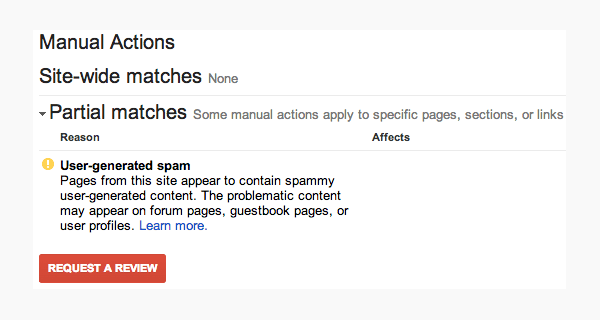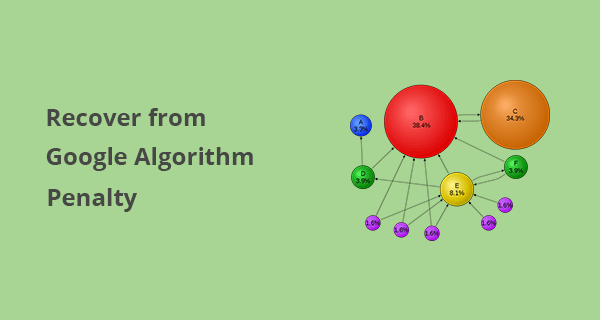Last Updated on by Azib Yaqoob
Are you afraid that your website has been penalized by Google? The main reasons for most websites to get punished by Google Search are powerful SEO techniques, auto-generated content, and similar actions to game the Google search algorithm. This post will tell you about different kinds of Google penalties and how to fix them.
One bad day, you realize that your entire web traffic has dropped, your entire website no longer appears in Google search results, or some of your website’s pages are removed from Google’s search index. The reason could be “Google Penalty,” AKA Spam Action.
Note: If you are using WordPress, you can check out this WordPress SEO guide which will save you from any Google penalty.
What is Google penalty (Manual Actions)?
Getting acquainted with these “Manual Actions” from Google is essential. Google, being the leading search engine, define parameters and update its search engine algorithms periodically for better web page ranking and relevant search results to constantly improve user experience. Google spam actions have two kinds – Manual and Algorithmic (the latter tastes awful!)
Manual Actions

A manual spam action is a result of a review by a representative of the Google webspam team. They penalize the entire website or a few or several pages of your website based on violations of Google’s guidelines.
Algorithm Penalty
The algorithmic penalty again has several varieties, based on periodic updates from Google. Although, the Google Search Console website didn’t provide much information on this matter. According to the Google Search Console Help website, “Google’s algorithms can detect the vast majority of spam and automatically demote its ranking in search results”.
The question is, what kind of websites are considered spam by the Google algorithm? We don’t know for sure. However, a site using SEO techniques against Google’s webmaster guidelines can be a good contender for auto-spam detection by Google.
How to Check if Your Website is Penalized?
It is important to keep track of the latest changes in Google’s algorithm to avoid penalties. A manual penalty is also a consequence of an occurrence of an algorithmic one.
In this case, a notification is forwarded from the webspam team to the webmaster about the cause of the penalty. There might also be a ‘Partial manual’ penalty where the reviewer will provide feedback based on problems related to non-functional links and content of your webpage that does not conform to Google’s guidelines.
To check for penalties, in this case, you have to log onto the Google Search Console account and select “Manual actions” in the “Search Traffic.”
In the worst case, your site may be entirely removed from Google’s index, yet, in the most common situation, it will fall over nominal listings in the Search Engine Results Page (SERP) for several keywords.
In such a case, there can hardly be a reason that your website has been hit with a penalty. There can be other potential reasons, such as:
All webmasters acquire the latest and most effective SEO strategies to increase the ranking of their site’s search index listing. Therefore, those websites below your website’s listing might have considerably improved their ranks by creating backlinks.
Since Google consistently and periodically updates website guidelines to adapt to its search engine indexing. There is a good chance Google might have voided such backlinks that resulted in a higher ranking in recent updates.
With each update from Google, the SEO strategies must be molded accordingly to keep up with the search results. So, following the recent updates, there is possibly a reason that the analysis criteria might have changed pertaining to on-site and off-site aspects.
Once given a manual penalty along with the highlighted problems, you, as a webmaster, need to take the necessary steps to eliminate the errors and submit a reconsideration request to Google.
Your website will be reviewed, and you will be notified whether the penalty has been removed.
In case of Google algorithm penalty following a recent ranking algorithm update, you will not receive any notification from Google.
There is also no option of reconsideration form as in the case of a manual penalty. To identify whether an algorithm update hits you, apply either of the following techniques.
The most effective method is to log in to Google Analytics and overview your Google organic traffic. You can select your website from the Google Analytics dashboard and then select ACQUISITION > ALL TRAFFIC > SOURCE > MEDIUM.
From the list, select GOOGLE > ORGANIC. You can view the web traffic you receive via Google search results.
Further, select the reporting period from the top right to analyze the potential drop in your web traffic. After correlating the drop with the timeline, you can check with the recent Google algorithm update(s) released during the period to identify which update caused you a penalty.
A similar method exists where you can signup and login to monitorbacklinks.com, and from the Overview page, you can see the minutes from all the recent Google updates. After reconciling the notes with the period of the traffic drop, you can identify the cause of the penalty.
When hit with an algorithm penalty or a filter (Panda, Penguin, etc.), first conduct a link audit and a forensic SEO to get to the roots of the cause. Backlinks are essential to achieve a higher ranking but can also be why your website is penalized.
Why Google Penalizes a Website?
With vague algorithm changes in Google indexing, webmasters must be on their toes to deal with an unpleasant experience in the shape of a penalty and losing target traffic. Some reasons why Google bashes your website can be:
- Over optimizing Anchor Link Text. Using excessive anchor link text points to your site as a result of closely matching the keywords for ranking.
- Duplicate content. Copying content is already unethical, let alone a penalty from Google. Make sure the content on your website is original and unique. Here is how to check and fix duplicate content issues.
- Excessive substandard links. Too many links from substandard or spam sites can cause you a penalty from Google. Sites with less than ten Open Site Explorer Domain Authority or an Ahrefs Domain Rank of less than 40 are considered low quality.
- Buzzword content. Content buttered with high keyword density is a candidate for a Google penalty, being low-quality content.
- Use of excessive advertising. The Google algorithm negatively assesses a cluttered website loaded with advertisement banners and links. A website must provide ample space in pixels on pages concerning the content.
- High Bounce Rate. A website or a page may also be penalized for a very reason if a visitor bounces back quickly to the search results without spending adequate time. Such a page is considered less valuable, or the content may be irrelevant to the user’s query.
- Malware. A severe offense where the identity and system of the visitor may be jeopardized if your website is infected with malware or has been hacked altogether.
- Hidden links. All the links must be visible to the users on your website. In case of any secret link, it can be considered suspicious.
Let me know your thoughts in the comments below. If you like this post, then please consider sharing it.

